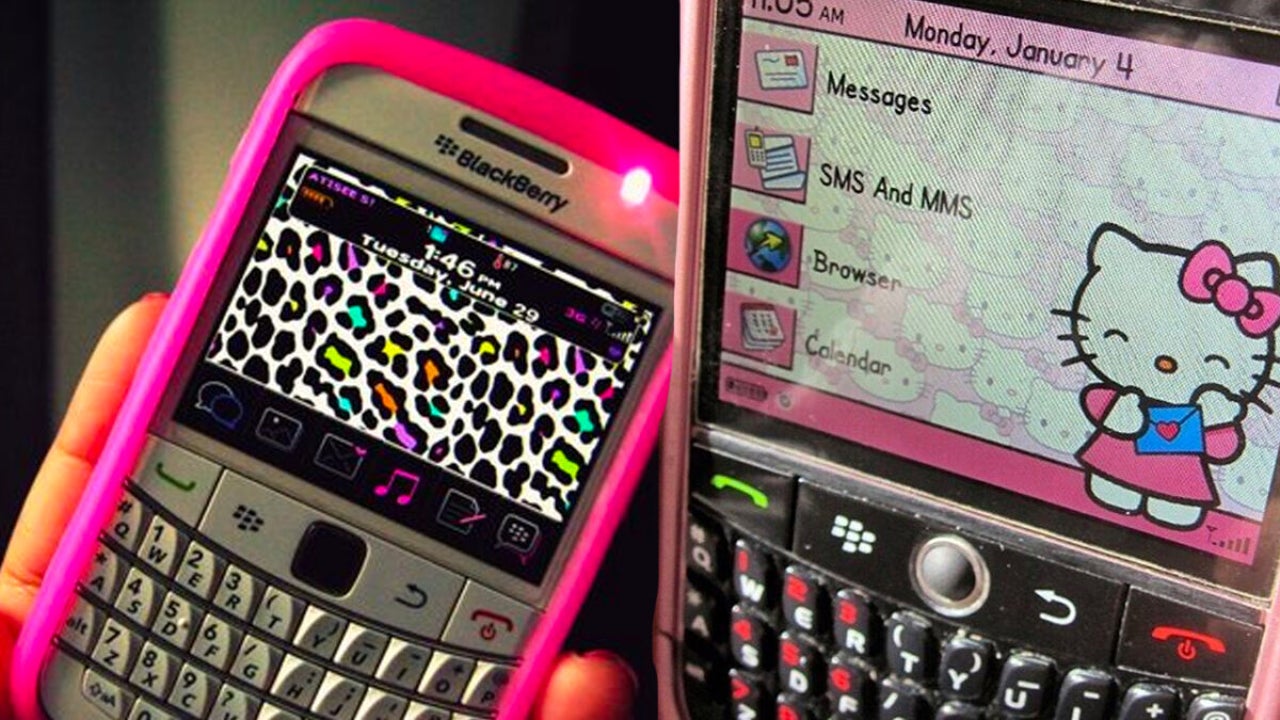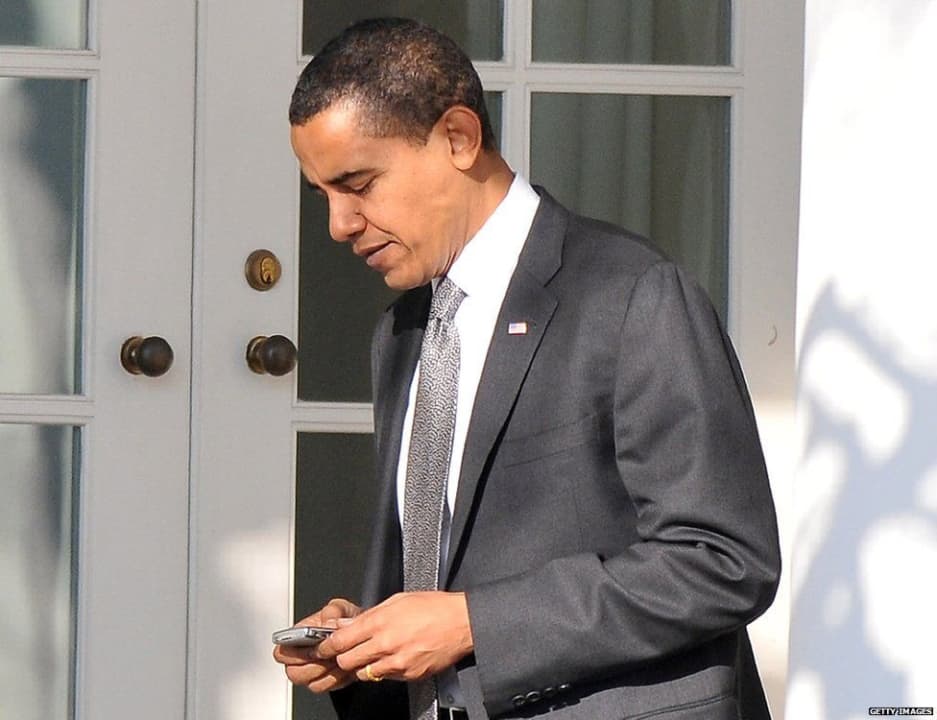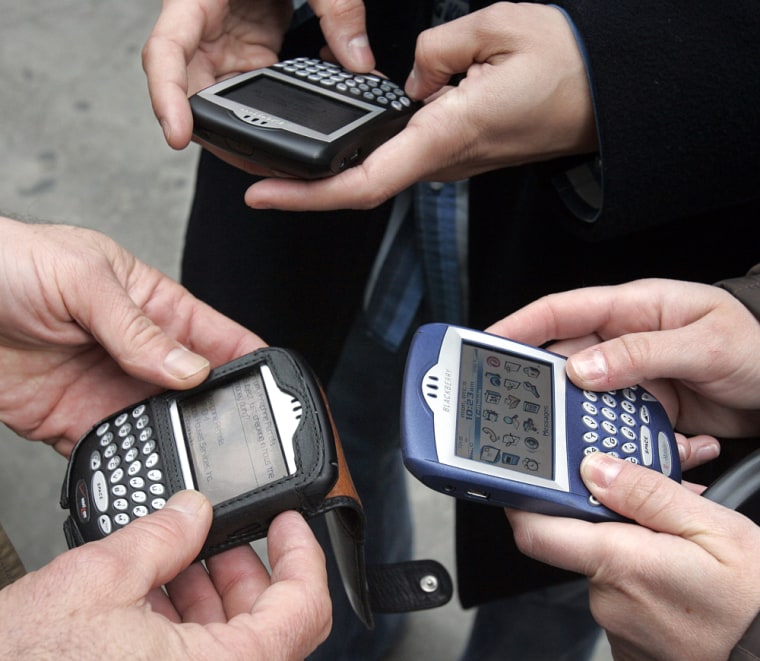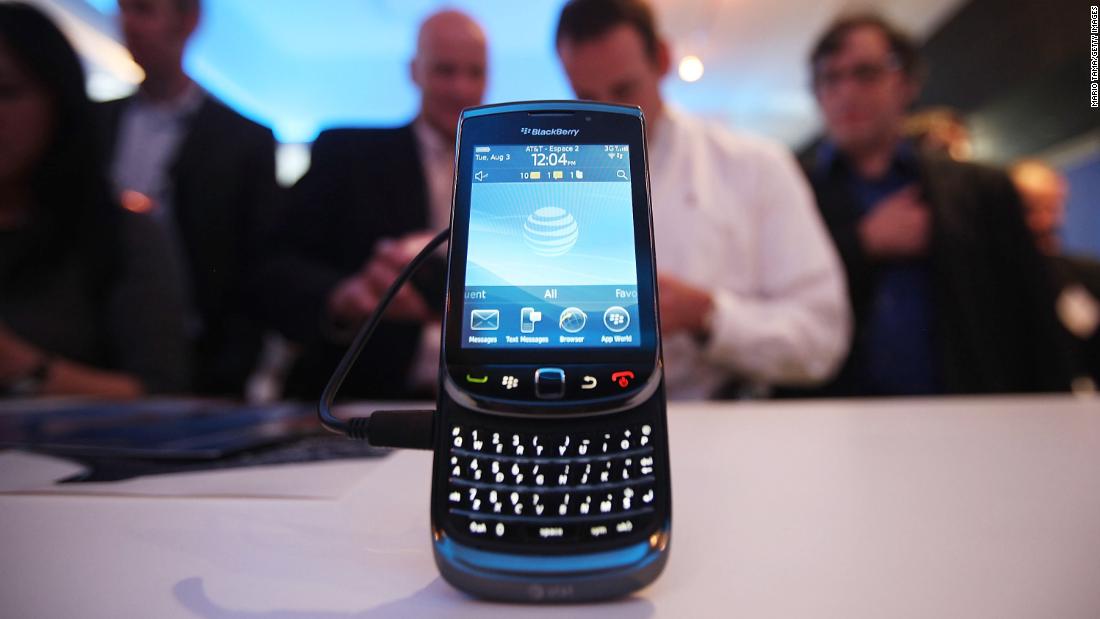News
Remembering the BlackBerry: The Pioneering Smartphone Before the iPhone
The story behind BlackBerry's surprising success

- March 17, 2023
- Updated: May 5, 2024 at 5:05 PM
On January 9, 2007, Steve Jobs made the most memorable presentation in the history of mobile telephony. Dressed in his legendary black turtleneck sweater, round glasses and a couple of days’ beard, the then CEO of Apple presented the first iPhone, the phone that would forever change the history of technology.
Undoubtedly, the presentation of the iPhone marked a before and after for the telephone industry. It became the smartphone par excellence and changed the technological social paradigm. However, its arrival and subsequent boom also caused the recession of many other brands that, at the time, were market leaders. And the most affected was undoubtedly BlackBerry.
Taking advantage of the release of the trailer for BlackBerry, the Canadian film that will tell the rise and fall of the technology company that dominated everything in the early 2000s, we want to remember the history of a company whose main product marked more than one adolescence and youth.
BlackBerry was a global milestone matched only by the subsequent rise of smartphones. It was a product ahead of its time; a hinge between the old phones only useful for calls and SMS and the post-iPhone trends. And, for many, the gateway to a generation where anything was possible.
The arrival of the phone of the future
Today’s BlackBerry Limited was originally founded as Research In Motion (RIM), a Canadian software and services company that began its journey in 1984. After the success of the first BlackBerry, it changed its name and specialized in launching hardware, but in recent years and after the decline of the brand, it has returned to its origins in the development of security software.
RIM’s history changed in the late 1990s when Mike Lazaridis proposed to the company’s CEO, Jim Balsillie, a unique invention that could revolutionize the market. The movie trailer sums up their meetings nicely with the following dialogue:
-Imagine a phone and a computer to answer email on one device. There is a free wireless internet signal all over the US and no one has figured out how to use it. It’s like the Force. Excuse me… have you seen Star Wars?
-No.

After convincing Balsillie, the two led this new invention and launched, in 1999, their first smartphone: the BlackBerry 850. It had a QWERTY keyboard and a black-and-white screen, and focused on sending messages via a mix of SMS and email.
At first, its design was not particularly attractive, and it was seen more as a device for companies than for everyone. However, it became a success thanks to its functions, so they soon began to develop new products, this time focused on everyone.
During the 2000s, BlackBerry became the leading brand in the industry. Its mobiles stood out for their security – originally, the company developed software of this style – and their modern and easy-to-use functions. Initially, professionals and businesses were the main users of these devices, but their popularity exploded in 2007, when the BlackBerry Curve was launched.

In 2009, the BlackBerry Curve was the world’s best-selling smartphone. Although the iPhone was already out, BlackBerry’s supremacy was evident, and it was thanks to many of its unique and useful features.
In addition to being compact and ergonomic phones, the BlackBerry Curve phones were the first phones to incorporate a high quality camera, allowing users to capture photos and videos with a higher quality than the cell phones of the time.
But what stood out from the rest of the mobiles of the time was its unique and special design. All of them, following the BlackBerry tradition, included a full physical QWERTY keyboard, allowing easy typing and sending SMS and emails, following their main idea but applying it to everyone.
Thanks to this keyboard, you no longer had to click three times on the 1 to put a “C” in a message, or twice on the 2 to put an “E”. A new form of messaging had arrived: faster, more efficient and incredibly addictive for the teenagers of the time, who could spend hours talking to their crush or their friends thanks to the BlackBerry chat -always over a Wi-Fi network-.

A dream to wake up from
Over the years, the BlackBerry Curve line was updated and improved with new features and technologies. Some of the most popular models include the BlackBerry Curve 8900, the BlackBerry Curve 8520 and the BlackBerry Curve 9360. These devices were trendsetting and kept the Canadian company growing. But, in an era of constant change, the joy didn’t last forever.
Despite its success, BlackBerry began to lose ground in the market to manufacturers such as Apple and Samsung, which began to launch increasingly advanced smartphones. BlackBerry failed to adapt to market changes, and its keyboard design soon lost out to touch screens.

In 2010, BlackBerry attempted to relaunch its brand with the release of the BlackBerry Torch, a touchscreen smartphone with a physical keyboard. However, the device failed to capture the attention of consumers and BlackBerry began to suffer significant financial losses. In 2013, the company reported a net loss of $4.4 billion and announced the layoff of 4,500 employees.
Despite its efforts to re-emerge and re-adapt to market changes, BlackBerry never managed to recover. And in 2016 came the sad news: they would stop manufacturing hardware. Instead, BlackBerry went back to its origins, returning to software development focused on security, an area in which it had always excelled. Thus, the great success of the time ended up looking like a fever dream with a very early awakening.

But it’s not all over for BlackBerry. Despite remaining in the background, it continues to be an enterprise software and services company with a very good reputation around the world. In North America – and especially Canada – it competes with other titans such as IBM for such services, and many top-tier companies rely on its software.
In the end, what we can learn from BlackBerry is a phenomenon that is splashed across all technology companies and that, in any case, is part of the day-to-day life of the pioneers of something. The speed of technological consumption and the evolution of the internet has changed everything, and in just two decades we have gone from needing a wired connection to having access to absolutely everything everywhere.
Companies like BlackBerry fall by the wayside and must readapt to these constant changes. But along the way, they leave a lasting nostalgia in the form of tiny keyboards, intense conversations via teenage chat rooms and the first quality smartphone photos.
Cultural journalist specialized in film, series, comics, video games, and everything your parents tried to keep you away from during your childhood. Also an aspiring film director, screenwriter, and professional troublemaker.
Latest from Juan Carlos Saloz
You may also like

Harry Potter will have a reboot in the form of a television series and fans are already complaining
Read more

The fifth season of The Boys will start filming without finishing the script, but for a good reason
Read more

Elon Musk, amid Nazi salutes, admits to cheating in Path of Exile 2
Read more

Path of Exile 2 has received what its players needed: a build simulator
Read more

The director of The Witcher 3 announces a vampire game and promises that it is not what you expect
Read more

Invincible already has a release date for its third season and comes with a surprise
Read more